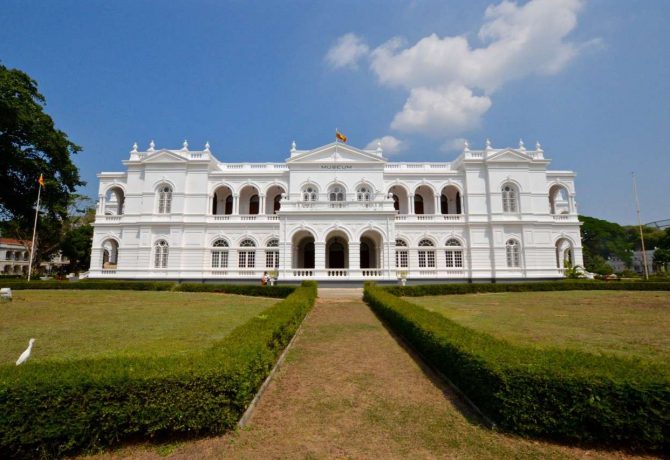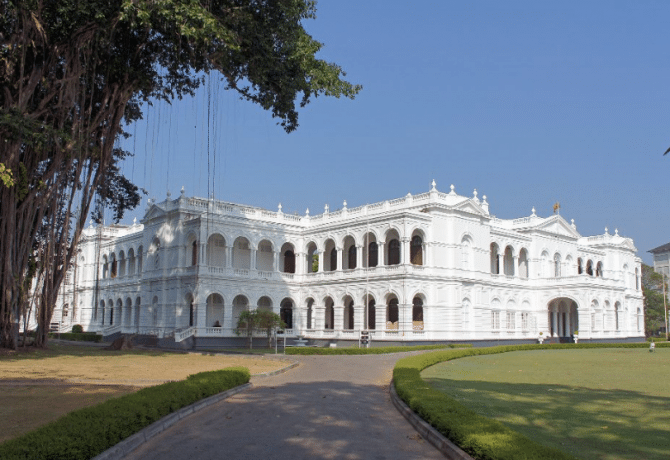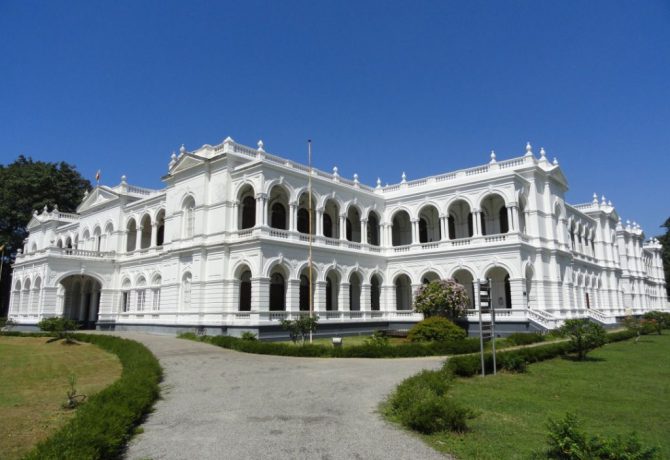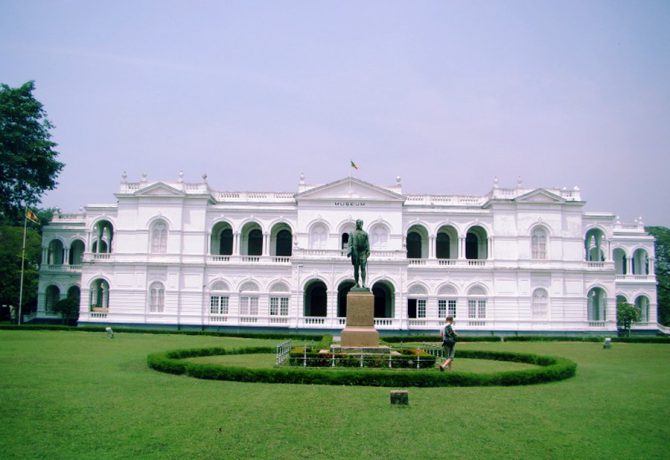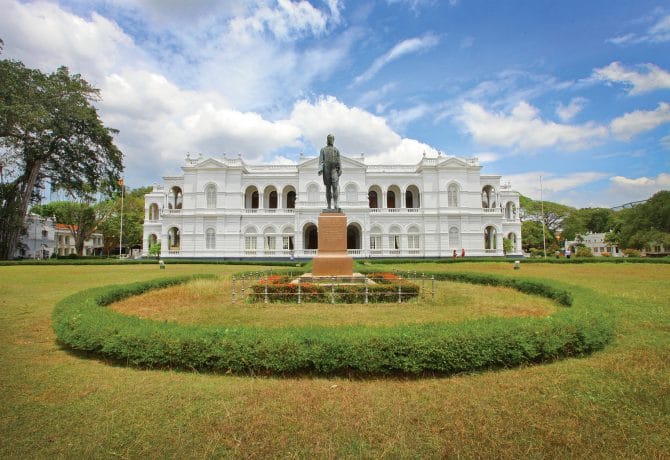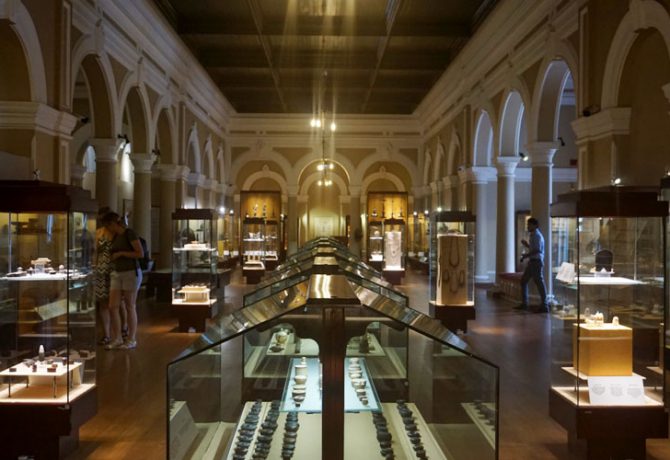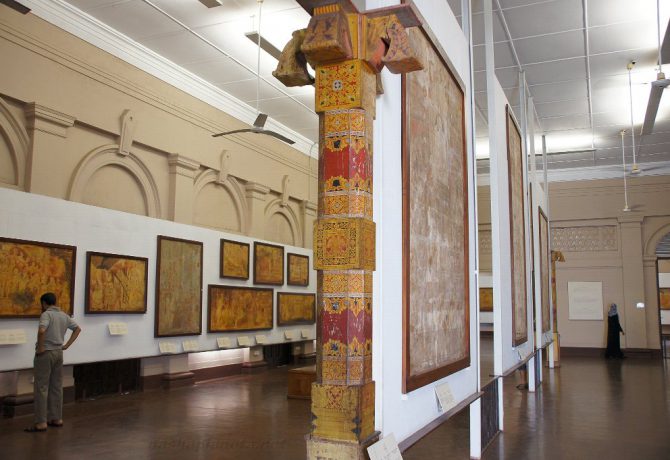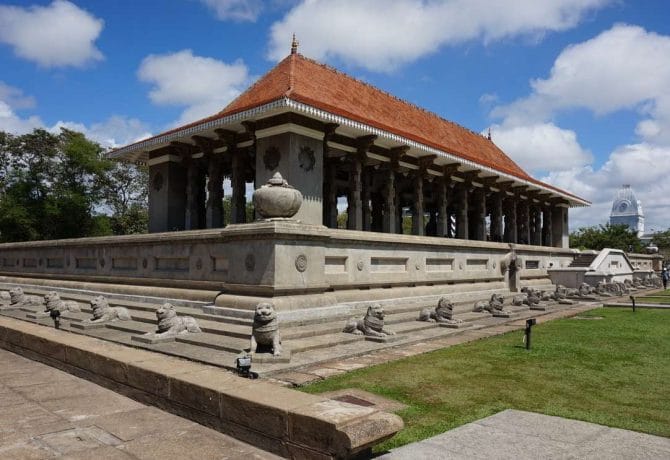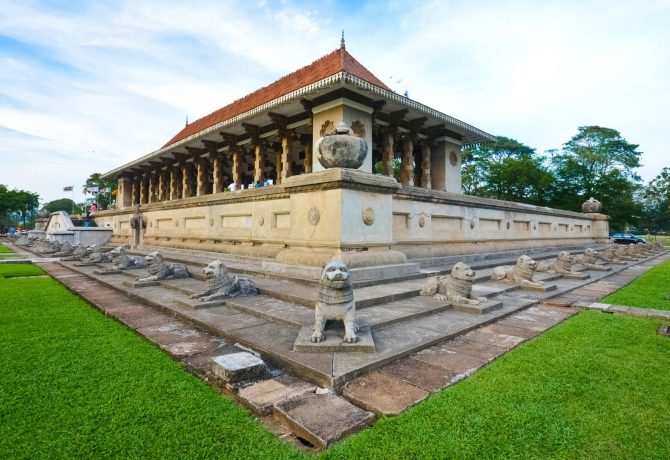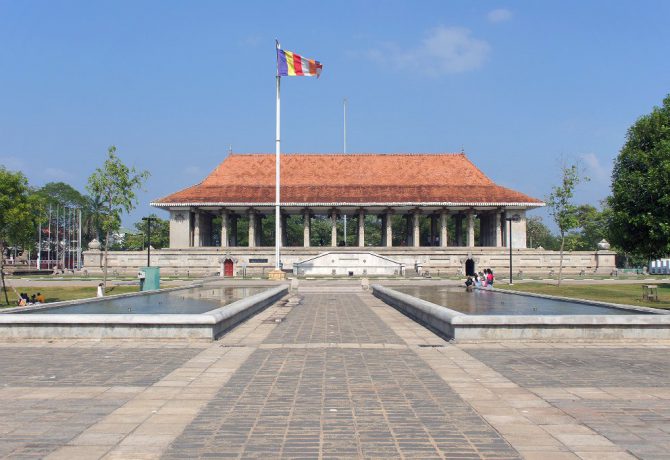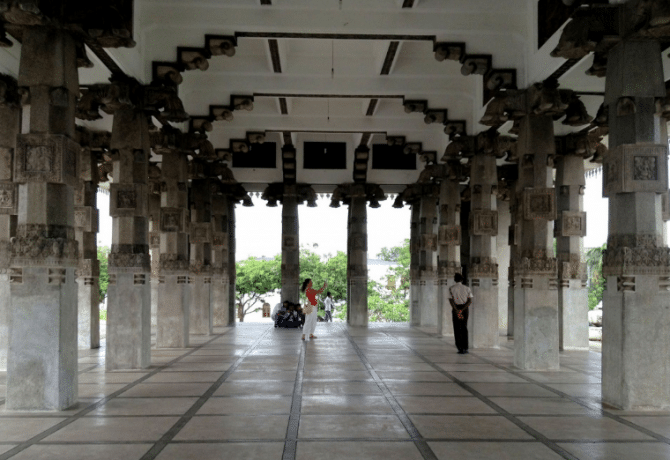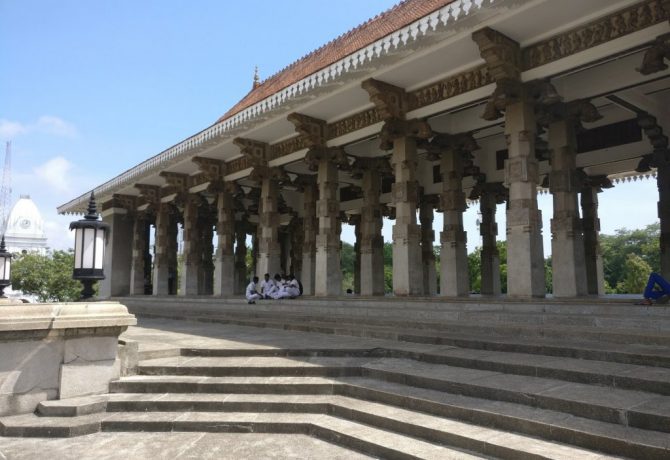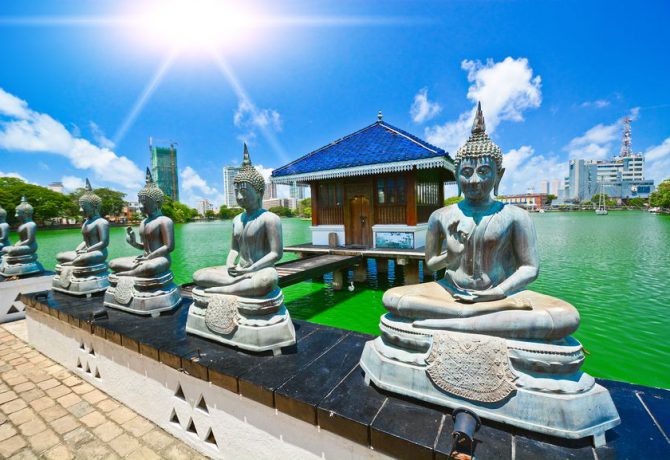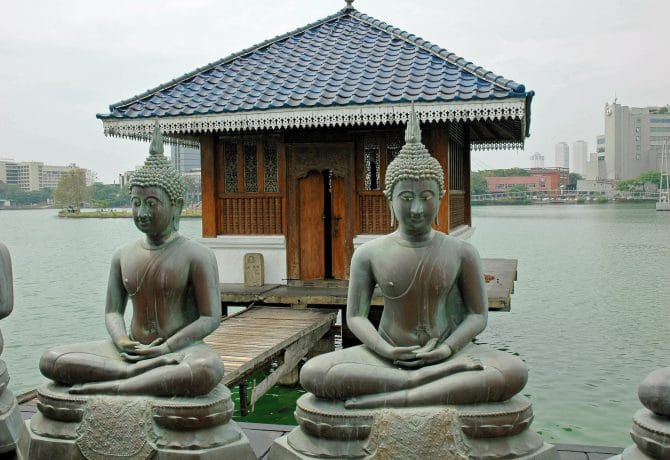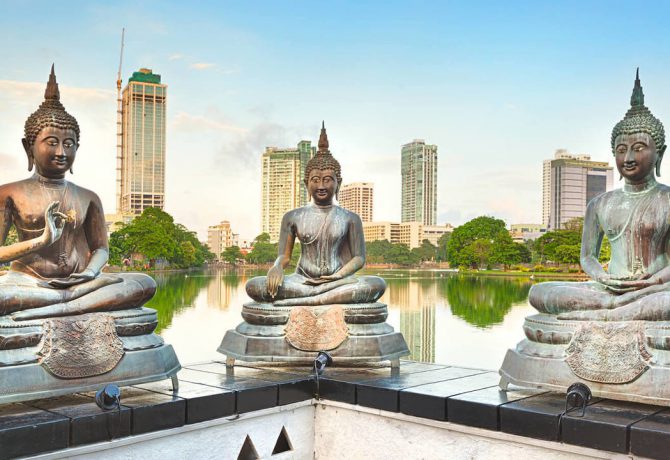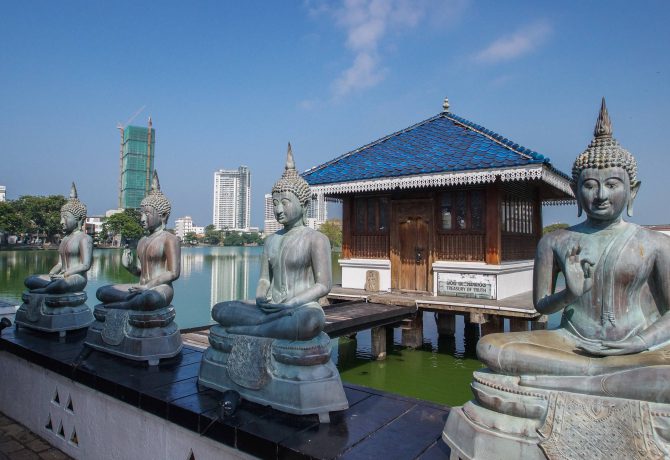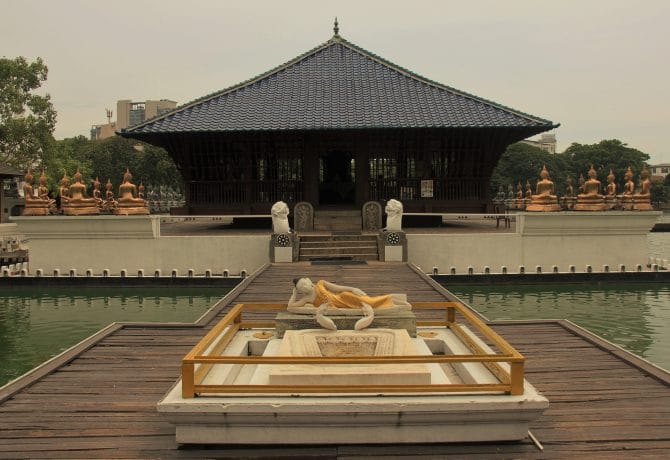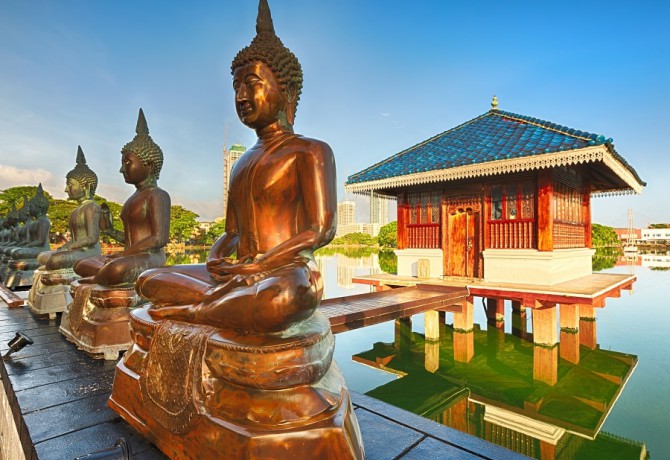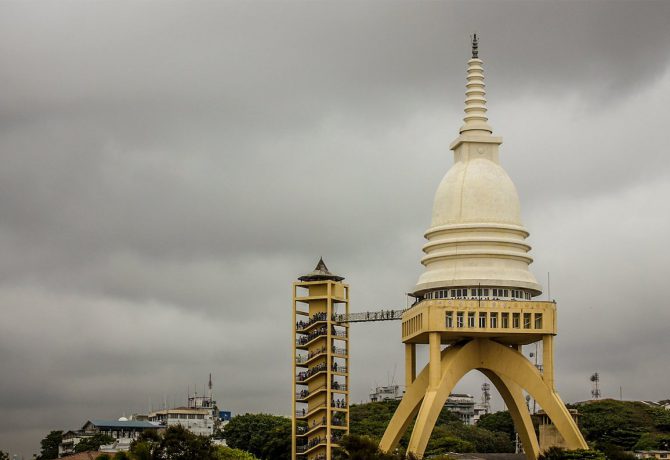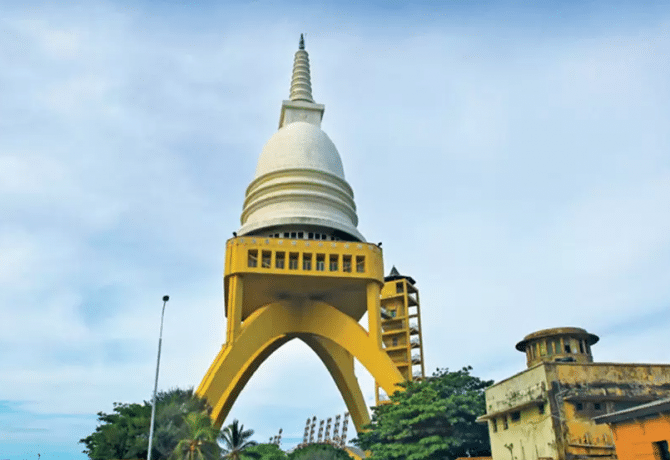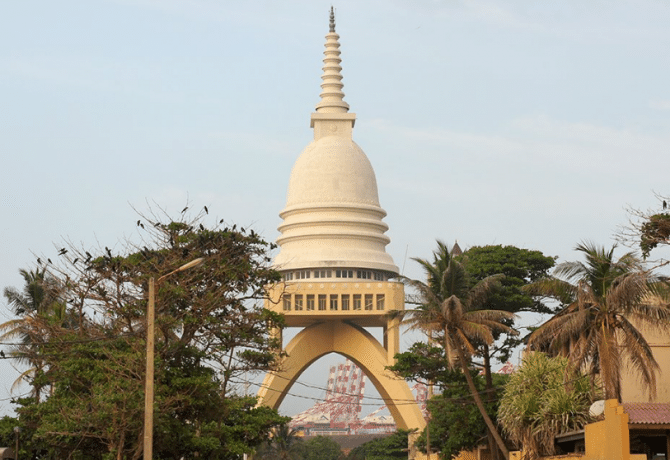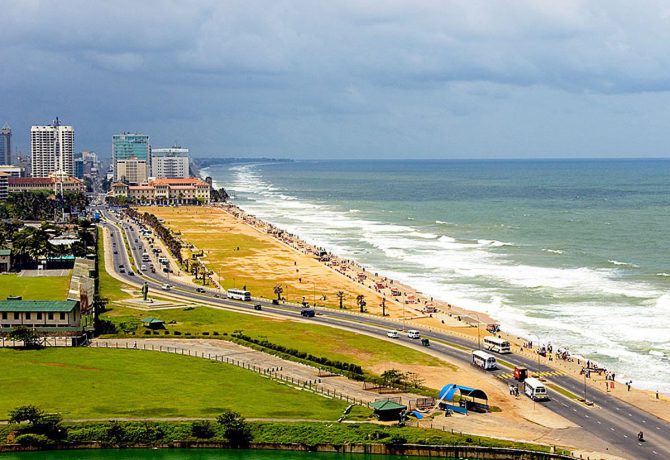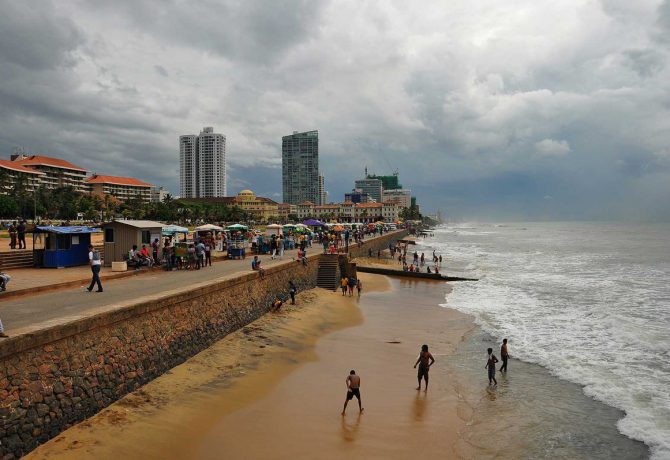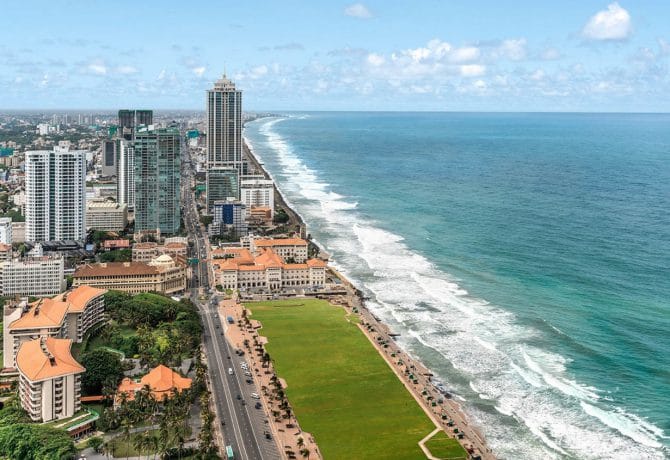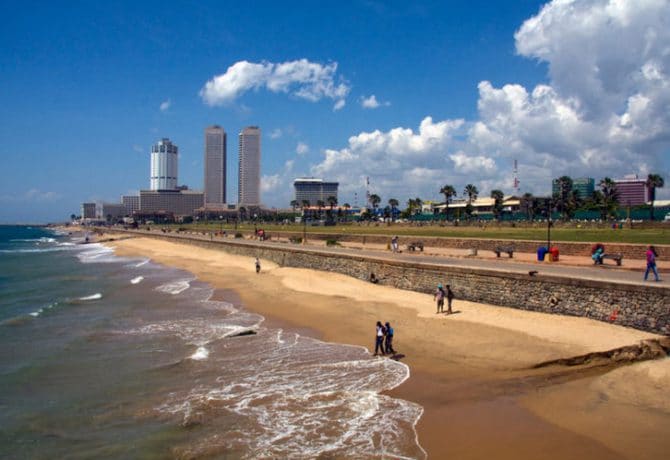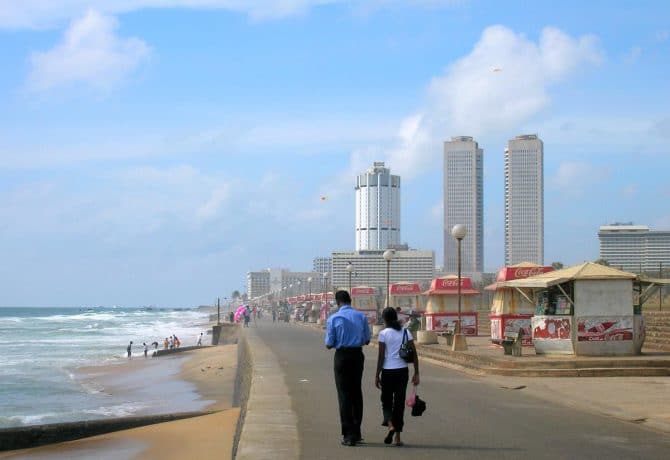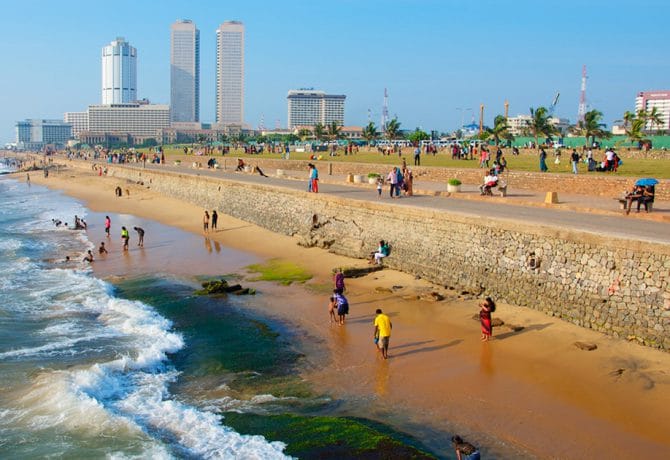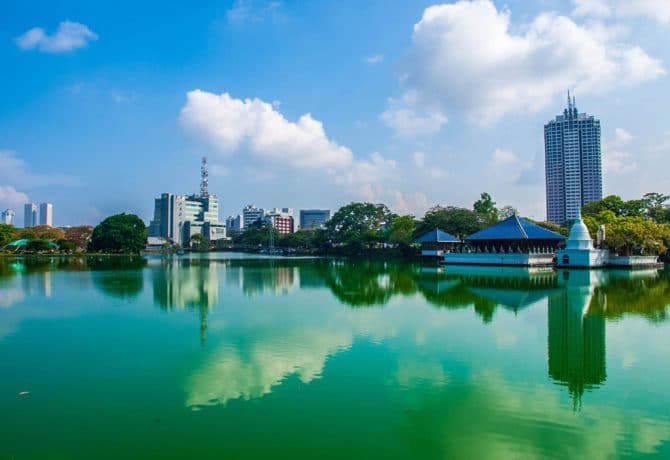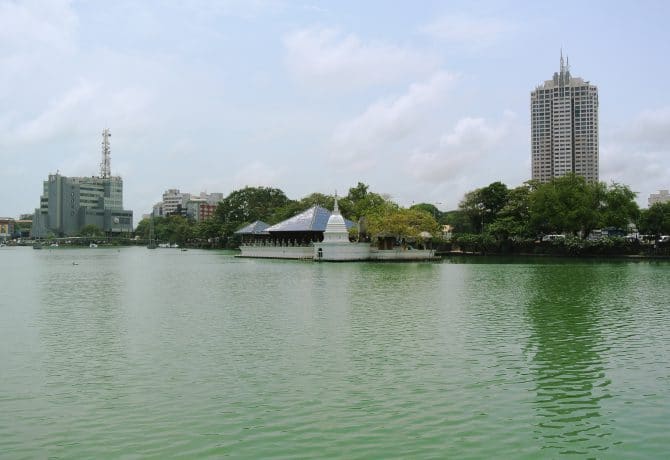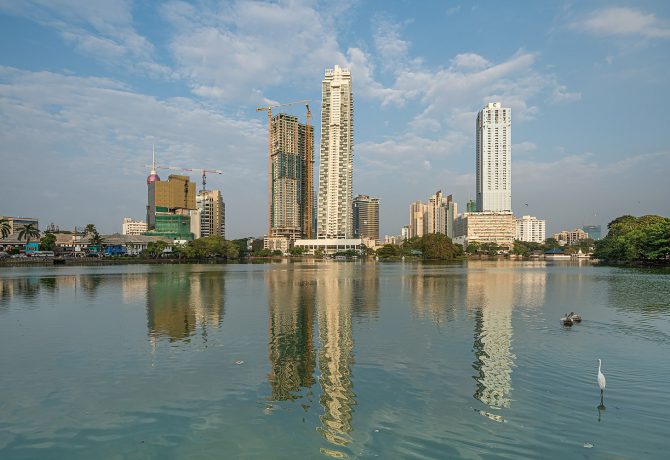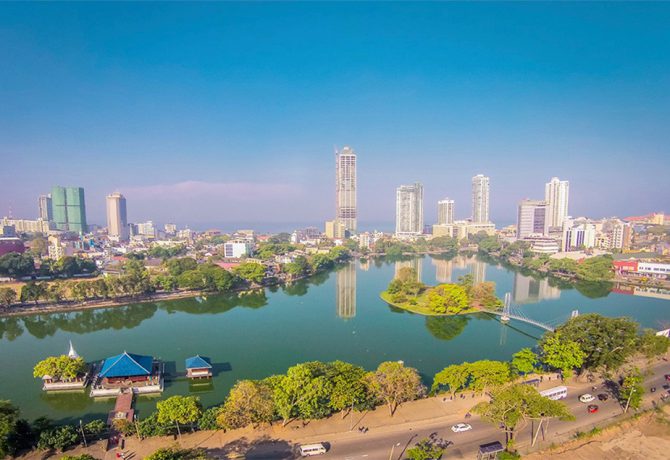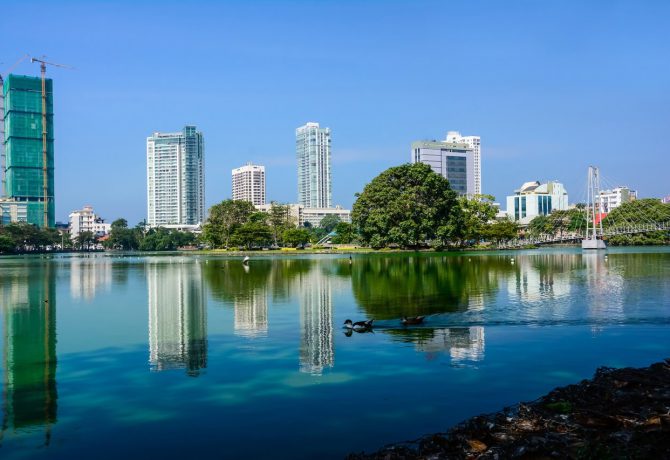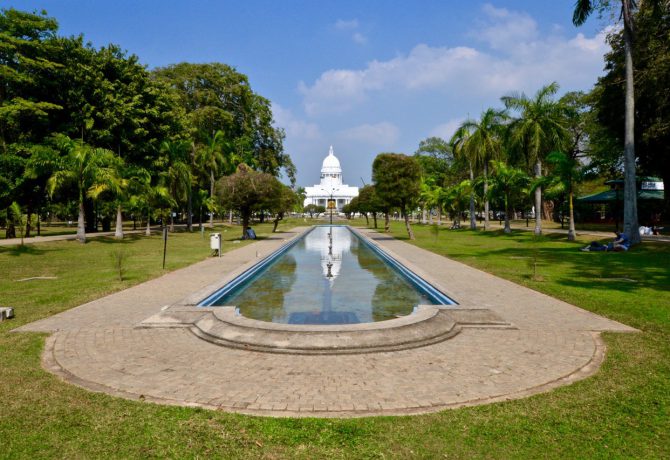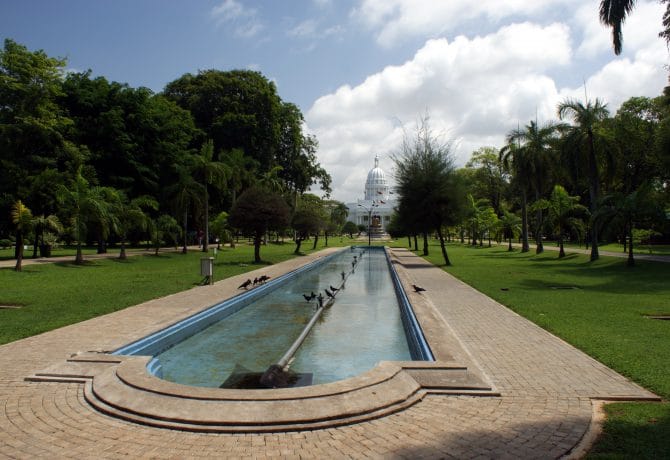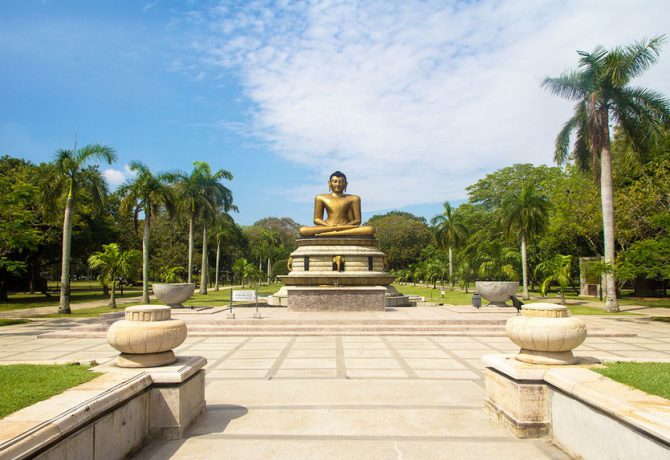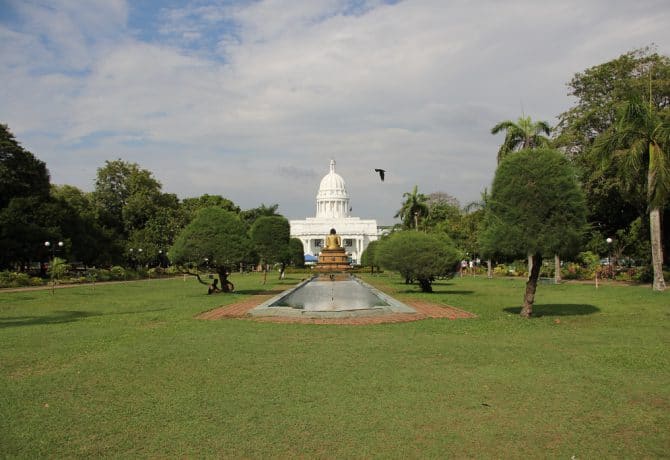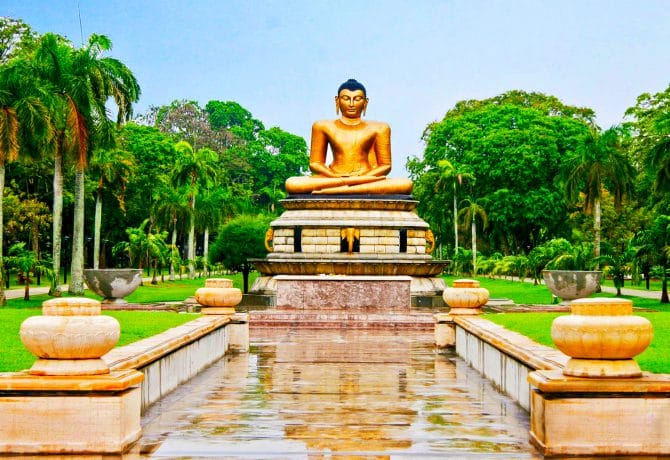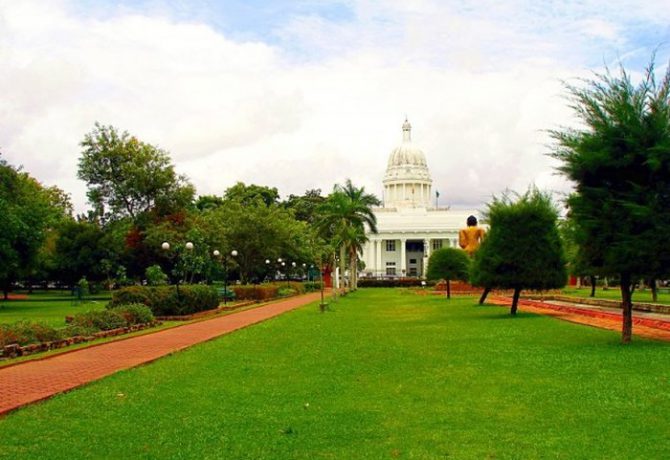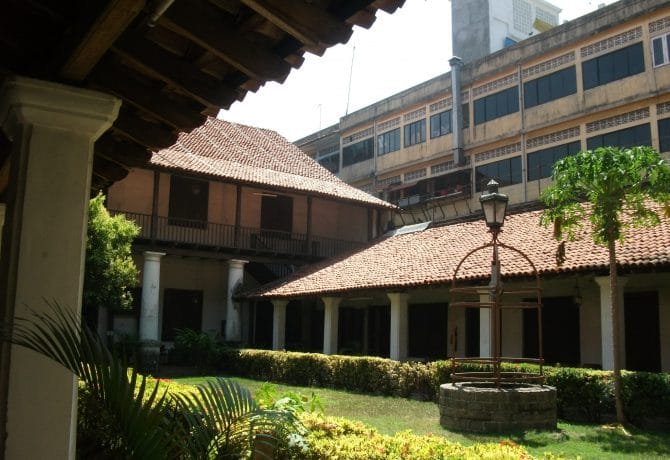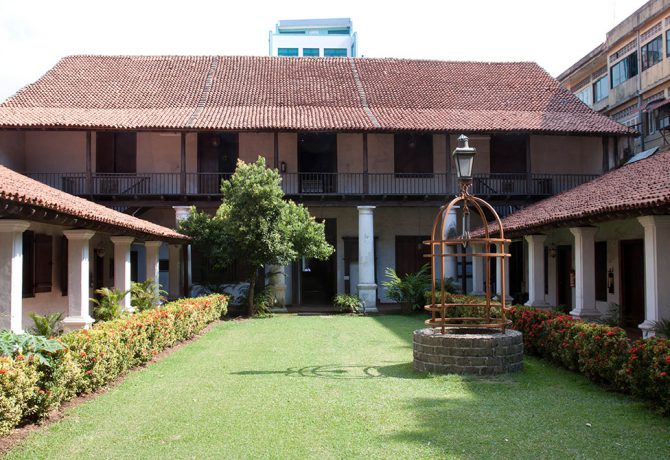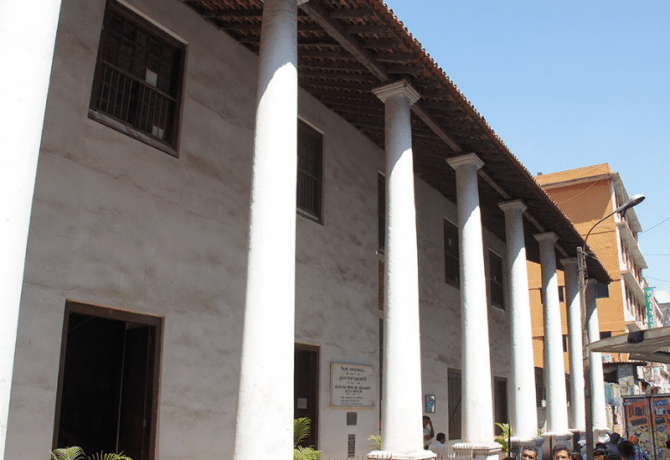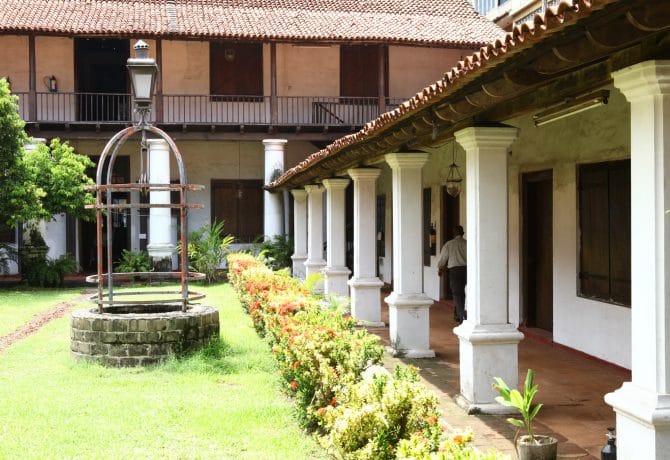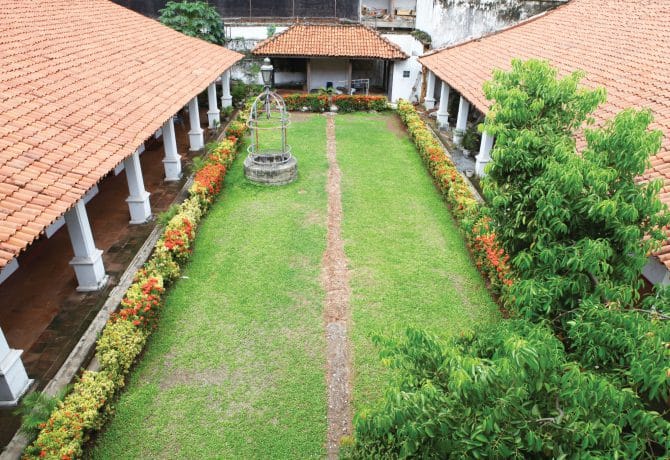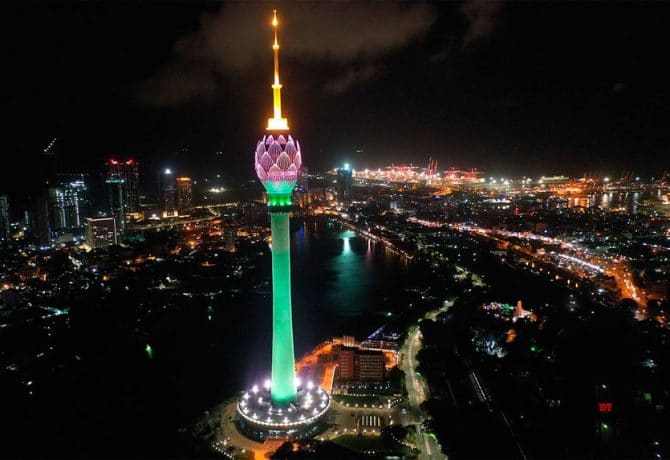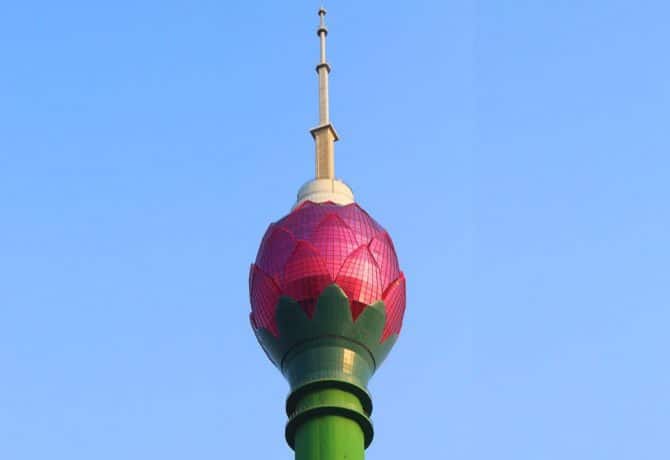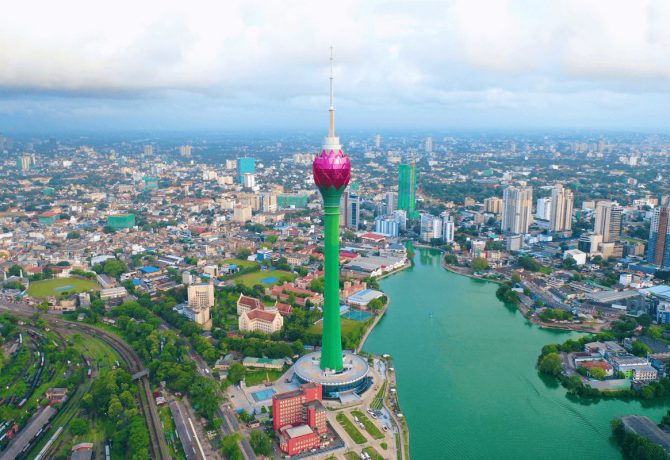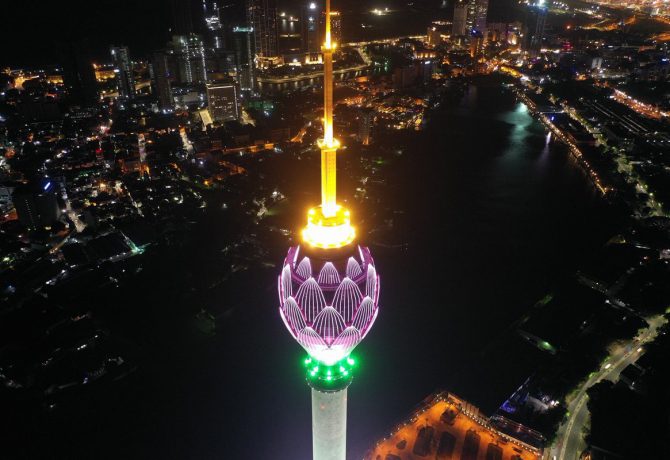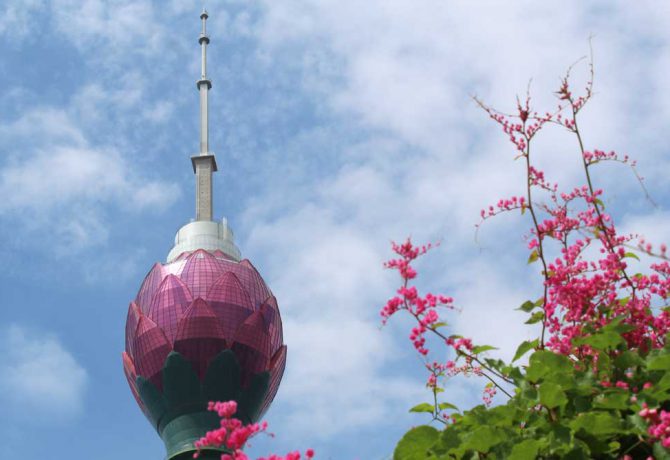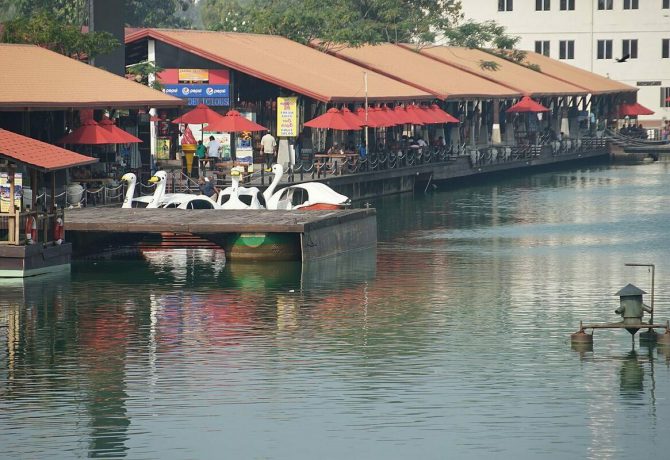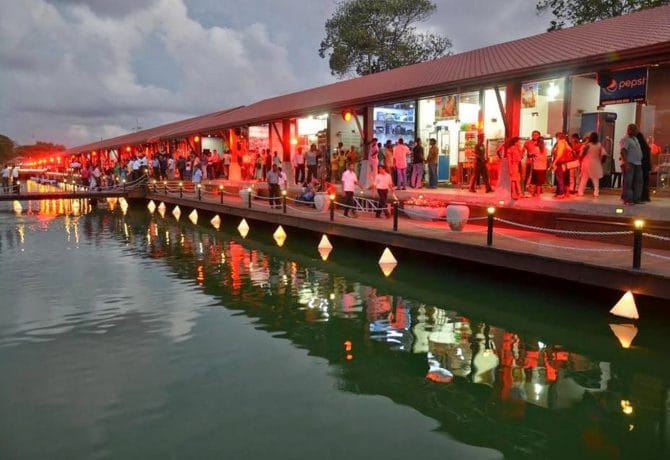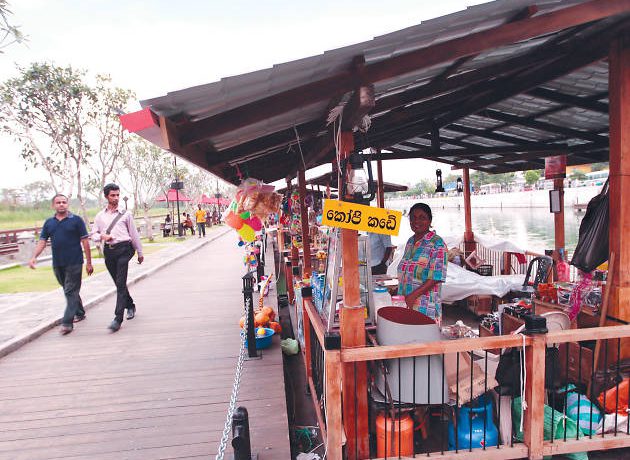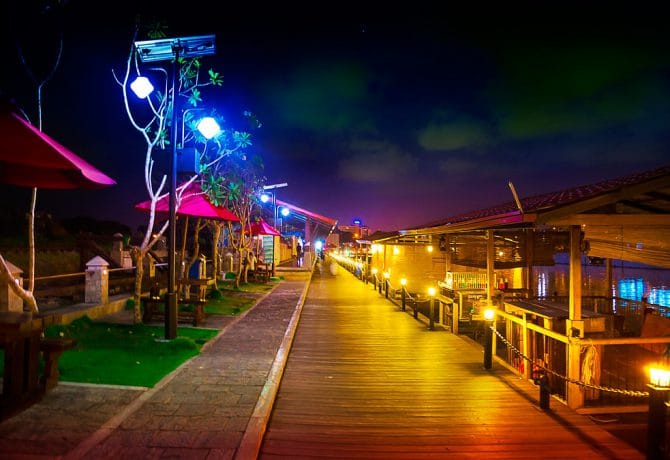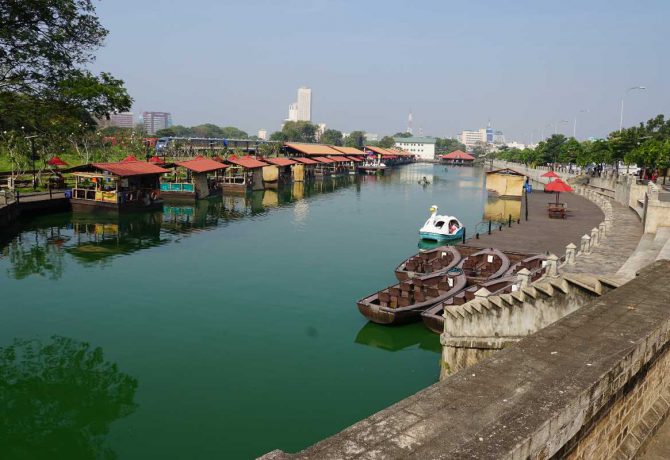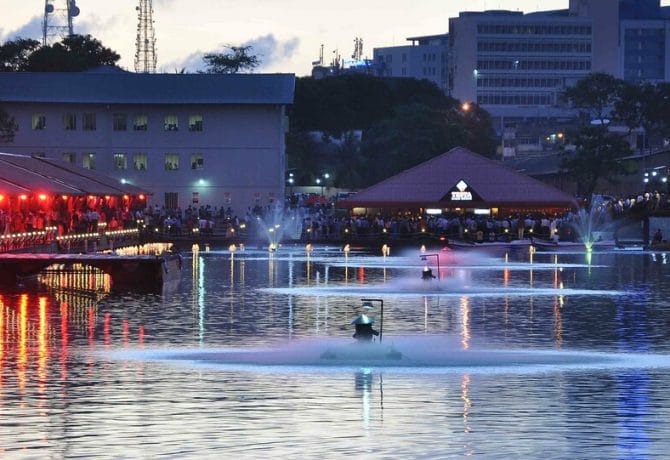Acquaintance with Sri Lanka begins with the main administrative center of the island – Colombo. Since the time of colonization, the city has been divided into two large zones. The port and the current central part were considered the place of residence of Europeans. The other, Petta, was inhabited by Senegalese, Tamils and other members of the local population. The review presents the main attractions of Colombo, collected in the format of a one-day excursion. Walking along the route, you can not only get acquainted with the history and culture of the actual capital of the island, but also buy souvenirs for loved ones.
Attractions Colombo on map
Colombo National Museum
In 1872, the newly appointed Queen, the British Governor of Ceylon, William Henry Gregory, decided to systematize knowledge about the fauna, flora and geology of the island. The idea was supported by members of the Royal Asiatic Society. The Charter, composed of eminent scholars and colonial administrators, launched nine national-level museums in Sri Lanka. In Colombo, the first of them appeared.
The design and construction of the building was carried out by the architect J. S. Miller. Smither. He chose the elegant Italian style. In 1877, the museum was opened to the public. At the same time, it became a center for research work in the field of nature, culture and development of the island. Its fund contains unique collections of works of art, household items, paleontological and archaeological finds. The museum conducts its own publishing activities, issuing booklets and scientific publications on the discoveries made.
The exposition is located on two floors. The gallery of the first floor is built in chronological order. On the second floor, artifacts are systematized by theme. In total, 17 halls are reserved for exhibits. They contain materials on the development of crafts, religion, culture for several thousand years. The art gallery is located separately. It houses paintings painted by leading painters of Sri Lanka.
Next to the museum there is a shady park. In it, you can hide from the scorching rays of the tropical sun, as well as meditate near the huge Buddha statue. It’s downtown. Buildings of the colonial period have been preserved here. One of them is the city hall. The walk will bring pleasure to history lovers.
Tickets are bought in the museum building. Separate prices are defined for each floor. You can buy a ticket only to visit part of the exposition, and it will cost less. The layout of the halls is located next to the ticket office. The museum receives visitors from 09.00 to 05.00 daily. Not far from the institution, you can rent inexpensive housing. There are also fashionable hotels in Colombo, such as “Cinnamon Red Colombo”, “Lavonca Boutique Hotel”, “Residence by Uga Escapes”, offering luxurious accommodation at an affordable price.
Address: National Museum, Sir Marcus Fernando Mawatha, Colombo, Sri Lanka
Website of the Department of Museums of Sri Lanka: http://www.museum.gov.lk/web/index.php?lang=en
Memorial Hall of Independence
If you start from the National Museum of Colombo, then the next object to visit is the Memorial Independence Hall. It is located on the square of the same name. Sri Lanka has long been in the status of a colony. When the Portuguese Lourenço de Almeida discovered the island to Europeans, for a time its coastal territory belonged to Portugal. The hinterland remained independent under the Dutch. With the advent of the British, the entire territory of Sri Lanka was occupied. Until 1948, it remained a British colony, then received the status of a dominion, and in 1972 full independence.
To Europeans, the island was known as Ceylon. Here they grew the best tea for the English breakfast. From the very beginning of colonization, a resistance movement was born, but its leaders sought independence by liberal methods without bloodshed. After independence, at the behest of the first Prime Minister, the Parliament building of Ceylon was built and the Alley of Memory was planted. The architectural composition turned out to be not quite familiar to the European canons. The main center of the Independence Memorial Hall consists of a covered colonnade with commemorative plaques installed inside.
You can get to the attractions through the park of the National Museum. If the hotels in which travelers stayed are in other areas of Colombo, then you will have to get there by public transport. Nearby there is a shopping and entertainment center with cafes and restaurants where you can have a snack. All public holidays are held on the square, the main of which is Independence Day – February 4.
Address: Independence Square, Colombo, Sri Lanka
Sima Malaka Temple
The next point of the walking tour will be the Buddhist temple of Sima Malaka. It was built at the end of the XIX century on Lake Beira in the center of Colombo. Contrary to religious canons, this place was originally used not for worship, but for rest and meditation. The old building of the temple gradually plunged into the water until it completely sank in the early 70s of the last century. The authorities instructed local architect Jeffrey Bava to restore the landmark. The project was financed by businessman S.H. Musaji. The temple was rebuilt in memory of his dead son.
For its reconstruction, a place on the water was again chosen. The building was built on three stable platforms, which are connected to the shores of the lake by pontoon bridges. The design is based on the traditions of ancient Buddhist temples. At the very entrance there is an installation of a trace of the Buddha, entering the sanctuary. Under the bodhi tree there is a statue of Buddha. There is a sanctuary in the main hall. Along the perimeter on four sides are the statues of Vishnu, Shiva, Kataragama devie, Ganesha and GuanYin – the bodhisattva of compassion, to whom the entire temple complex is dedicated.
Sima Malaka is part of one of the most important temples in Sri Lanka – Gangaramaya. It is located a few hundred meters east of the surface sanctuary. Unlike the “branch”, the entrance to it is free. To enter Sima Malaka you will have to buy an entrance ticket. It costs 300 rupees (the price is actual for January [y]). The photo shoot is paid separately. The temple is especially beautiful at dusk, when the illumination of objects is turned on.
Address: Seema Malaka, Sir James Pieris Mawatha, Colombo, Sri Lanka
Sambodhi Chaitya Stupa
After gaining dominion status and Ceylon’s entry into the Commonwealth of Nations, henpitagedara’s religious leader Gnanasiha Thero decided that the country should move in a Buddhist direction. Near the main port of Colombo, a Buddhist landmark, the Sambodhi Chaitya Stupa, was erected. Engineer A. N. S. Kulasinghe designed the statue in such a way that it is visible to these ships arriving in the capital of Sri Lanka.
Its construction began in 1956. According to the architectural idea, the sanctuary was built of reinforced concrete and installed on two interconnected arches. The building crowns the main road to the harbor of the city. 123 steps lead to it. To climb to the top of the Stupa, you will have to overcome another 258 steps connecting 11 floors.
Inside under the dome is a temple room with four Buddha statues. The walls are painted with frescoes from fragments of his life. The painting was worked on by the recognized Sri Lankan artist Vipulasara Maha Thera. During his lifetime, he was a monk of one of the 18 early Buddhist schools, Theravada. Above the frescoes rise statues of the four guardian gods of the island, the so-called “Heavenly Kings”.
In front of the Stupa is the main lighthouse of Colombo. Nearby is the Maritime Museum. Keepers receive visitors from early morning until 18.00 pm. Before entering, you will have to take off your shoes, so you should correctly calculate the time of the visit. During the day, the concrete steps are heated by the sun and the feet will not be comfortable walking on them. The best time is morning or evening. After visiting the temple under the dome, it is recommended to inspect the area around it. Here are: a tree planted by the first woman Prime Minister of the country, ancient anchors, cannons and other interesting exhibits, raised from the ocean floor.
Address: Sambodhi Chaithya, Chaithya Road, Colombo, Sri Lanka
Galle Face Green Promenade
Walking along the largest promenade of Colombo “Galle Face Green” is a dream of everyone who comes to Sri Lanka. The promenade appeared in 1859. It was founded by the governor of Ceylon, Henry Ward. Initially, horse racing was held here. Then the place was called the Colpitti Hippodrome. Then there was a golf course. Over time, it turned into a walking area of 5 hectares. Today there are entertainment and shopping facilities, lovers make dates, picnic lovers spend their free time in the fresh air in a pleasant company of friends.
The area is located on the shores of the Indian Ocean. It is windy here, so in the sky you can constantly see several dozen colorful kites. They can be bought in the shops located along the Promenade. The organizers of the walking area did not ennoble the territory, lay tiles, install beautiful parapets. As a hundred years ago, under the feet of vacationers – densely rammed sand, asphalt is laid in some areas, and you can go down to the ocean in any place you like.
There are a number of limitations that at first glance may seem mutually exclusive to each other. You can not go here on a bicycle or scooter, but tuk-tuks (motor rickshaws) freely ride around the territory. They deliver food and goods to local merchants, whose shops are located throughout the coastline. You can roll your two-wheeler next to you. On the Promenade you can: fly kites, go into the ocean to jump on the waves, watch the sunset from a steep cliff. Entrance to the territory is free.
Nearby are the hotels «Ceylon InterContinental» and «Galle Face Hotel». The first is a modern 9-storey building and provides guests of Colombo with 5-star service. The second is the oldest hotel in Ceylon. The house was built in 1864 and since then has become a symbol of hospitality of the main city of the island. For all the time of its existence, the luxury hotel has received the most famous and high-ranking people of the planet. The owners organized a museum of the history of the hotel, in the exposition of which you can find many amazing exhibits.
Address: Galle Face Green, Colombo – Galle Main Road, Colombo, Sri Lanka
Lake Beira
Returning to the shore of Lake Beira, it is worth a walk through its sights. In addition to the Temple of Power of Malaka, there are several unique sites that arouse the interest of travelers. The reservoir is divided into four basins: East Lake, Halle Face, West and Southeast Lakes. All of them are of artificial origin. The moat system was built by the Portuguese to protect Colombo from enemies, which included local kings. As a result of the connection of artificial moats with a natural stream, a lake was formed. Then it was connected to the ocean using canals.
Not all the shores of Beira are equally suitable for walking. The territory is given for construction, but the work lasts more than one decade. A large section of the coast was once given to warehouses, which have survived to this day. They stored tea, spices and other goods shipped from the main port of Sri Lanka around the world. Today they are abandoned and you should not walk among them.
The following objects are of tourist interest:
- Colombo Rowing Club. It was founded in 1864 and is the central base of boat rowers in Sri Lanka. This sport has been developing on the island for more than 140 years. The main rival of the islanders is a similar club Madras (India). When rivals gather for competitions, additional stands are installed on the shore of the Beira, since stationary ones cannot accommodate everyone.
- World Trade Expo Center. The twin towers are the tallest buildings in Sri Lanka. Their height is 152 m.
- The People’s Bank and the headquarters of the state’s internal revenues.
- Joseph Colombo College is the only educational institution that has its own rowing canal.
- The President’s House (Lake House) is just behind the college.
Nowadays, a number of measures are being taken to clean the lake from pollution. Its structure is an excellent environment for algae life. They give the water a green color and an unpleasant odor. In addition, sewage waste has been descending into the lake for hundreds of years. The project “Megapolis of the Western Region” is designed to completely block the flow of effluents into the lake, as well as to purify its waters from the existing dirt. It is planned that modern hotels will be built on the shores, as well as wilderness areas will be preserved. It is home to storks, several species of fish, populations of monitor lizards and pelicans.
Address: Beira Lake, Colombo, Sri Lanka
Viharamadevi Park
The inhabitants of Sri Lanka honor the forces of nature, know how to preserve and restore them. A prime example of positive human intervention is the Viharamadevi Arboretum. The park is created in the image and likeness of a classic English garden. Initially, it was named after Queen Victoria, but after independence, it was named after the mother of the Sri Lankan hero Dutugamund. At one time, he was able to unite several disparate areas of the island and set the people up for a liberation movement.
The entrance to the park is located almost immediately behind the President’s House. You can’t pass it by. In front of the entrance there is a large statue of the Buddha sitting in meditation. Green lawns and lush tropical trees look so alluring that it will be impossible not to walk along the alleys.
Immediately behind the “golden” statue begins the gallery of fountains. This is a favorite place for photo shoots. After the shooting, tourists usually wander along the paths and paths to enjoy the unity with nature, admire the orchids, observe the life of bats, as well as visit monuments. On the territory of the park there are 150 steles, statues, monuments. In one of the commemorative columns, the famous Soviet sculptor Lev Efimovich Kerbel had a hand. He created a monument in honor of the first Prime Minister of free Ceylon, Mr. Bandaranaike.
The park has created an infrastructure for active recreation. There are sports grounds, a golf course, attractions, a variety stage, on which concerts are often held. On the shores of reservoirs there are rental points for boats and catamarans. You can play football, basketball or cricket at any time. Children will be happy to ride on a children’s train, and then visit the contact mini zoo. Hospitable Sri Lankans took care of picnic lovers. On the territory you can sit in the shade of trees or the secluded shore of the lake.
Entrance to the park is free, but you will have to pay for entertainment or visiting sports grounds or concerts. Not so long ago, a rollerdrome was built. Roller skates can be rented.
Address: Viharamahadevi Park, Colombo 07, Sri Lanka.
Dutch Museum
The next object of visit can be a museum telling the story of the colonial past of Sri Lanka. It is located in a two-story house at 92 Prince Street. The building itself is an architectural monument of that period. It was built in the mid-17th century and was once the official residence of the governor of Ceylon. Then it housed a pedagogical college, a post office, a hospital, an orphanage, and after restoration in 1982, the Dutch Museum was opened.
Its exposition includes the entire ensemble, starting with the courtyard and ending with the interior decor. The fund contains artifacts, furniture, clothing, weapons, coins, tombstones associated with the period of rule of the Dutch authorities (1656-1796 years of occupation). Exhibits were collected all along the coast. It is known that the Dutch did not go inland. The British did it for them. Many things in the museum are not subject to restoration, but are of interest not only to history lovers.
Recently, hotels decorated in the style of the colonial period have been in fashion. Many are decorated in the English tradition. They even have antique furniture brought back from Foggy Albion. With Dutch interiors, everything is much more complicated. They are created on the basis of miraculously preserved samples in the museum. The Danish House accurately captures the authentic atmosphere of the Dutch period.
Address: Dutch Museum, Prince Street, Colombo, Sri Lanka
Lotus Tower
If the Dutch Museum is a unique historical landmark of Colombo, then the Lotus Tower with a height of 350 m is considered the main symbol of Sri Lanka. This multifunctional building is located on the shores of Lake Beira. Its original purpose was to provide telecommunications services. This is the leasing of antennas, the provision of television and radio broadcasts, the support of television services. Today, the Tower also receives revenues from trade and tourism.
It is built in the shape of a lotus flower. From time immemorial, the plant has symbolized unblemished purity and spiritual perfection. For Sri Lanka, there is no other embodiment of the cosmic force leading the country to prosperity. The podium of the tower consists of 6 floors. From a distance, it looks like a lotus bud with closed petals. For the ascent of guests there are 7 high-speed elevators. At the bottom there are 4 entrances, two of which are intended only for VIP persons.
In the Tower, you can visit the museum and exhibition halls located on the ground floor of the podium, take part in a conference in one of the halls on the 2nd floor, sit in a restaurant or run through the supermarket on the 3rd floor. On the remaining floors there are hotel rooms, ballrooms. The dome is crowned by an observation deck.
Address: Colombo Lotus Tower, Colombo, Sri Lanka
Pettach Floating Market in Colombo
At the end of the walking tour, you can go down to the Pettach area and visit the famous floating market. It’s just behind the port. It sells food and products made by local artisans. A very good place to buy Sri Lankan food and unique souvenirs at the same time. The market is located on Bastian Street, which during the reconstruction was connected to the bus and railway stations of Colombo. This is a landscaped area, where more than a hundred small entrepreneurs are officially engaged in trade. The project was implemented in 2014, when the government decided to bring all illegal business out of the shadows. Since then, pettah’s floating market has been Colombo’s youngest attraction.
Address: Pettah Floating Market, West East Bastian Mawatha, Colombo, Sri Lanka
The main city of Sri Lanka amazes the imagination with the fusion of several cultures at once. Here, the remnants of the colonial era and traditional Buddhist values coexist perfectly with modernity. The districts of Colombo were formed and developed according to different laws, so in addition to the city center there are many other historically significant places.

